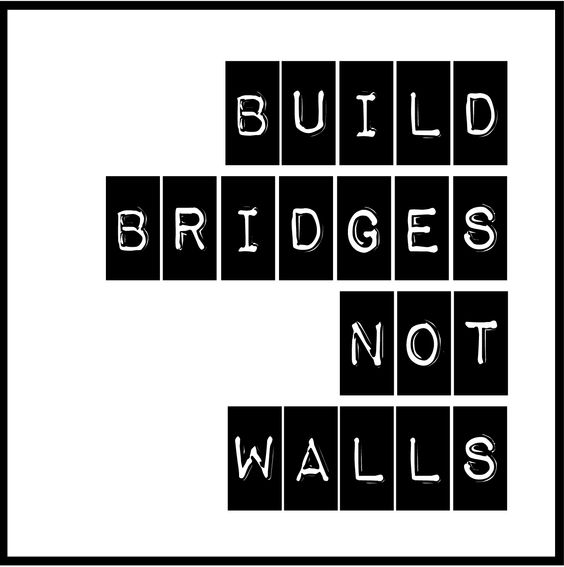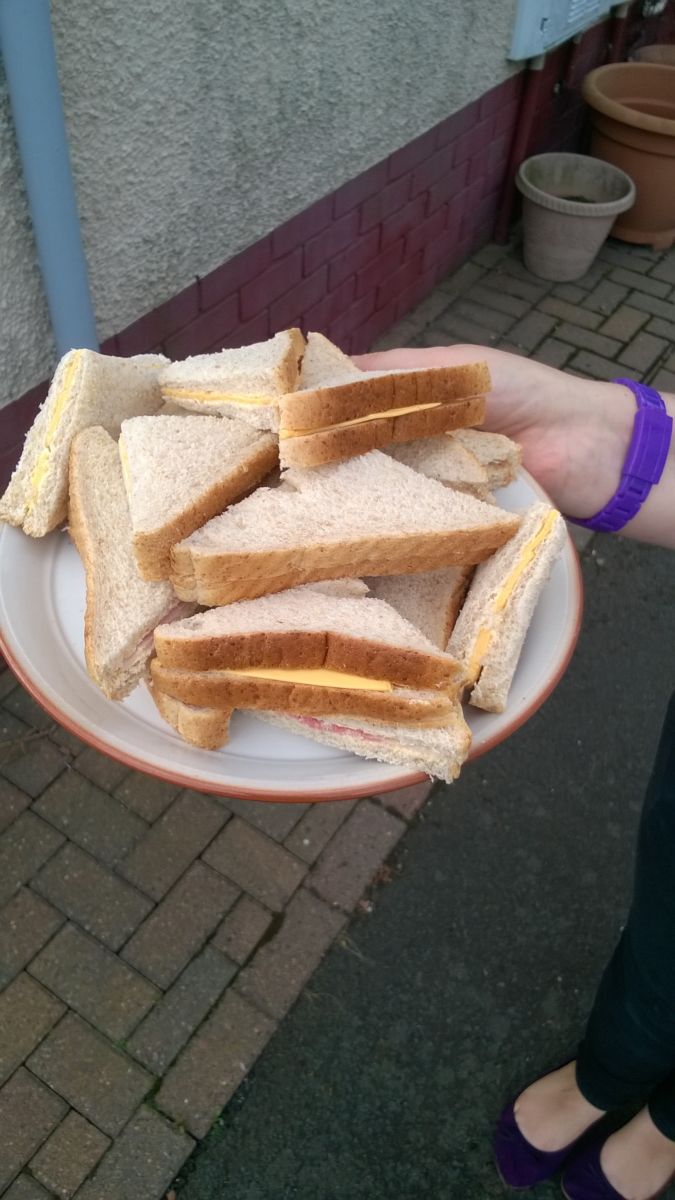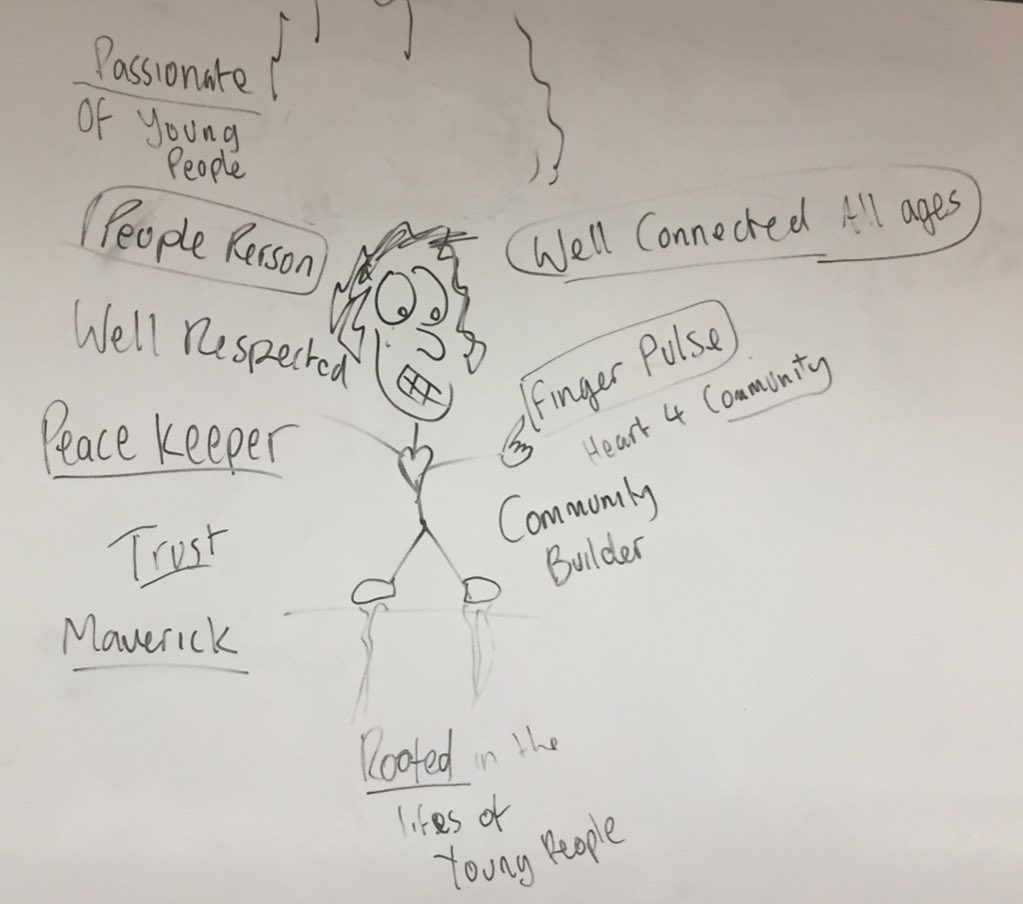
Taking a Strengths Based Approach with Young People. Part 2: Building Walls or Building Bridges
In the second part of this series of two blogs, we want to get practical. We’d like to speak about what bridge building into the centre of an interdependent life looks like, and also to take the opportunity to tell you about a new training offer.
In every neighbourhood, there are residents who care deeply for young people and who believe in them. They are not motivated by the impulse to keep young people “off the streets” or “out of trouble”. Instead they have a genuine and well-intentioned instinct for connecting young people into civic life. They see the untapped energy of all young people, and are sincerely perplexed and often distressed as to why others can’t see what they see in the young people of their community. Where some only see trouble, they see potential.
Among such folks, there are a number who are able to bridge the gap between young people’s potential and potential places of welcome in their communities for the gifts that young people have to offer.
 Whilst in South Africa at the ABCD South Africa Festival I told a simple story of one of these bridge builders, named Stuart. He vouched for a small group of young people, building a bridge with between them and local neighbour needing their garden tidied. The result was a lovely garden, a new conversation and the local resident sharing sandwiches with the group of young people.
Whilst in South Africa at the ABCD South Africa Festival I told a simple story of one of these bridge builders, named Stuart. He vouched for a small group of young people, building a bridge with between them and local neighbour needing their garden tidied. The result was a lovely garden, a new conversation and the local resident sharing sandwiches with the group of young people.
However when I told this in my, not so thick Scottish accent, Stuarts name was lost in translation. I found a group energised by the role of the ‘Steward’ (as in the one who stewards/practices stewardship) and finding the Stewards of every neighbourhood. I found this rebadging of the bridge builder to be an apt one; the Steward was born. A person that doesn’t lead, but offers guidance and stewardship nurturing strong citizenship amongst young people and the civic life of their community: they find space for, and often broker young people into community space, to take action on what matters to them. This goes considerably deeper than finding young people volunteering activities.
When we see the Youth Centre as the sole or primary space for young people to stay and grow personally and as citizens, we inadvertently close them off from a wealth of enhancing opportunities beyond the door step of the centre. There is an entire community ecosystem, waiting to be tapped into, and when we don’t build bridges into that space the power of village to raise a child languishes.
When we solely focus on teaching young people interview skills, rather than paying attention to the local economy and local businesses contribution to employment and connecting young people into such ‘on their doorsteps’ assets, we limit our views and their opportunities. When we limit young people’s expectations to the time slots of a youth club, and displace the gifts of local people, we reinforce the need for professional intervention. As I reflect on my time as a Youth Worker I wonder how my stewards I displaced in my role? How many times I would work with a youth group in isolation from their neighbourhood and the productive adults in that neighbourhood?
Here are three questions that I have found really helpful in my practice. These questions shape my understanding of how we take an Asset Based Community Development approach to walking alongside young people in their communities. It is a self-assessment tool; a measure of neighbourhood connection.
How many stewards do you know?
I believe in the strength of a good rumour; so how many stewards have you heard rumours of? Do you know them to talk to? Could you arrange to have a coffee with them? What are they interested in?
How many local young people have shared their gifts with their neighbours, and visa versa?
Through the lens of Asset Based Community Development, behind each door are residents willing to share their gift with the neighbourhood; they just haven’t been asked yet. There are also stewards that hold an ability build bridges to these residents and the trust of local young people, how often have you experienced this in practice?
How often do you inadvertently displace a young person’s citizenship?
Knowing what we know of stewards, young people and their neighbours, how often has a young person’s idea been nurtured and encouraged by neighbours? Not simply drafting in volunteers but occupying community space, acknowledging the contribution of local people and offering young people an opportunity to share what matters to them.
The present and future of young people is a subject that we hold very dear in the Nurture Development team. We are delighted to be working with friends across the country to create a training offer, bringing young people in from the edge of community life. We want to work alongside young people, stewards, their wider neighbourhoods and civic-minded professionals to bring the citizen-power of young people to the forefront of their communities. That in mind we are convening a number of informal conversations with interested citizens and civic practitioners about the development of a workshop that promotes two shift in thinking and practice:
- the shift from seeing young people, as ‘at risk’, to seeing them as ‘at promise’
- shifting from viewing communities as hostile towards young people, to seeing them as places with reservoirs of untapped welcome just waiting to be discovered, connected and mobilised.
If this is a conversation that appeals to you or you’d like to discuss organising a workshop for your community, organisation or team, please contact us at: shaun@nurturedevelopment.org
Shaun Burnett


David Aynsley
Young people will take a place in the centre like air moving into a vacuum. It is our responsibility even duty to make a place for them to fill. I have clear experience that this approach works and can produce remarkable unintended or unexpected results.
Shaun Burnett
Thanks David! Hope you can continue to be part of the ABCD and Young People conversation. Shaun